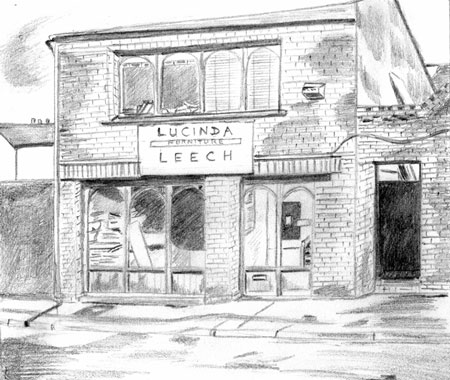ABOUT JERICHO - HOUSES
No. 6 King Street

The building when occupied by a furniture workshop
The place that now houses Estia Wellspace
Posted - March 02, 1999The earliest mention we can find of this building is from 1871 when a Mr Soden had a chimney-sweeping business here. Later from 1889-97 the building was owned by a builder named J. Baker. He then sold it to Mick Tysall who kept horses and used No. 6 as a repair workshop for early motor cars.
In 1910 it was taken over by the Faulkner brothers who started a bicycle business (surprisingly, also selling fruit and vegetables). The grandson of one of these men, Mr Bill Faulkner, took over after his grandfather’s death and continued the bicycle business, combining this with motorcycles, using 55 Walton Street as a shop frontage. He tells me that he used to keep old penny-farthing bikes upstairs above his workshops and still has one at his home at Church Hanborough.
In 1983 Faulkners moved to Botley Road. The shop at the front was sold to a bike shop Cycle King and No. 6 was sold to furniture designer Lucinda Leech. Lucinda, who lived in Walton Street. She made a distinctive wooden frontage (in the Illustration) and used the ground floor as her workshop where with a team of craftsmen she produced beautiful custom-made modern furniture. She let out the upper floor to Mr Robert Clark, an antiquarian bookseller.
From 2009 to 2016, the ground floor was occupied by an art gallery Art Jericho which latterly was run by Jenny Blyth. Jenny now operates as Jenny Blyth Fine Art in the Carey Blyth gallery at 8 Woodstock Road OX2 6HT.
In 2019 the site was redeveloped and the ground floor is now occupied by Estia Wellspace.
Author: Jenny Barsley
How many people live in Jericho?
In 2011 Jericho had a population of 1,400 residents living in households. There are no communal establishment residents. There has been little change in the total number of residents since 2001.
Margaret Thatcher used to live here?
In her Oxford days, she lived at 12 Richmond Road. It is alleged she shared the house with two red-hot communists who lived on a diet of sausages. This may account for her later views on socialists and known dislike of sausages.